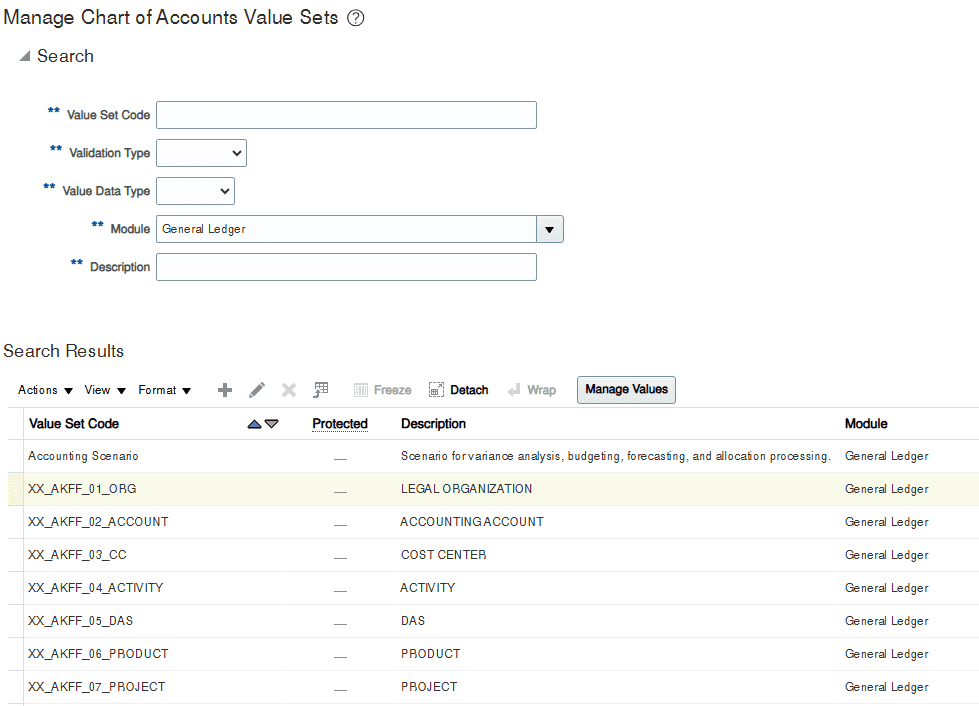The accounting key (or Chart of Accounts structure) in Oracle Cloud Financials is a critical component of any financial implementation. It determines how financial transactions are recorded and reported. A well-designed accounting key is essential for accurate financial reporting, budget management, and compliance with internal and external financial policies.
In this guide, we will walk through the steps to define and configure an accounting key in Oracle Cloud Financials, including the necessary Oracle roles, navigation to the required setup tasks, and essential considerations for ensuring a robust financial structure.
Importance of the Accounting Key in Oracle Cloud
Designing the right accounting key is one of the most critical steps in an Oracle Cloud Financials implementation. It impacts:
- Financial reporting: Determines how transactions are classified and aggregated.
- Budget management: Ensures that budgetary controls can be effectively applied.
- Operational efficiency: Reduces errors and inconsistencies in financial transactions.
A well-structured accounting key should capture all critical dimensions of the business. A good example of an effective accounting key structure could be:
- LEGAL ORGANIZATION → ACCOUNTING ACCOUNT → COST CENTER → ACTIVITY → DAS → PRODUCT → PROJECT
Prerequisites: Oracle Roles Required
To define and configure the accounting key, the following roles are required:
- Application Implementation Consultant – For configuring the Chart of Accounts structure.
- General Accountant or Financial Analyst – For managing segment values and relationships.
- IT Security Manager – For managing access to financial reporting structures.
Step 1: Accessing the Financial Reporting Structures
- Log in to Oracle Cloud Financials.
- Navigate to Setup and Maintenance from the Navigator.
- In the search bar, enter Financial Reporting Structures.
- Click on the Manage Chart of Accounts Value Sets task.
Step 2: Managing Chart of Accounts Value Sets

To Create a New Value Set:
- Set Module to “General Ledger” for proper filtering.
- Click on the Create button.
- Enter the Value Set Name (e.g., LEGAL_ENTITY, ACCOUNT, COST_CENTER, etc.).
- Choose the appropriate Validation Type:
- Independent: List of predefined values.
- Dependent: Values that depend on another segment.
- Table: Dynamically retrieved values from a table.
- Define Value Data Type (e.g., Character, Number).
- Enter the Format Type (e.g., Alphanumeric, Numeric).
- Save and Close.
To Manage Existing Values:
- In the Manage Chart of Accounts Value Sets screen, search for the required value set.
- Click on Manage Values.
- Modify existing values or add new values.
- Save and Close.
Modifying Relationships Between Two Values:
- Navigate to Setup and Maintenance.
- Search for Manage Chart of Accounts Mapping.
- Select the mapping rule you need to modify. Or create a new one.
- Adjust the dependencies between value sets as needed.
Step 3: Managing Chart of Accounts Structure
- Navigate to Setup and Maintenance.
- Search for Manage Chart of Accounts Structures.
- Open your existing Chart of Accounts structure or create a new one.
- Define each segment (e.g., LEGAL ENTITY, ACCOUNT, COST CENTER, etc.).
- Assign each segment to its corresponding Value Set.
Step 4: Updating the Hierarchy and Validating the Structure
After defining segments, perform the following actions:
- Submit the hierarchy for review:
- Navigate to Manage Chart of Accounts Hierarchies.
- Make necessary updates to segment values.
- Click Submit.
- Perform System Actions:
- Audit the structure to ensure completeness.
- Flatten the hierarchy:
- Action: Flatten Columns
- Action: Flatten Rows
- Run the “Process Account Hierarchies” Job:
- Navigate to Tools > Scheduled Processes.
- Search for Process Account Hierarchies.
- Run the job to apply changes.
Defining and configuring an accounting key in Oracle Cloud Financials is crucial for financial integrity and effective reporting. The steps outlined above ensure that your Chart of Accounts is structured properly, allowing for efficient budget management and financial reporting.
By following best practices and ensuring a logical structure, your organization can achieve a robust financial framework that meets compliance requirements and supports strategic decision-making.
